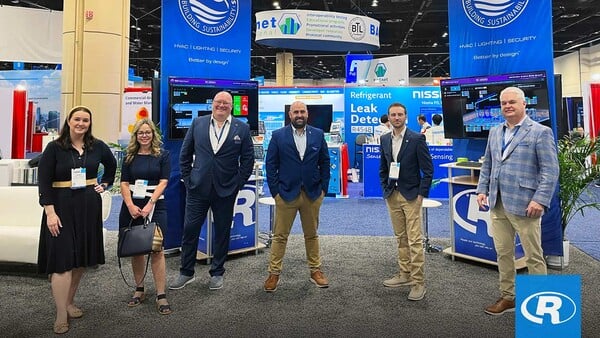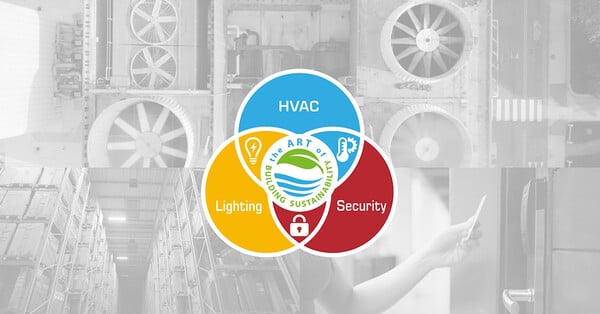Real results: 3 enterprise projects powered by Reliable Controls
Explore how our technology automates complex enterprise portfolios.





Many ascribe to the adage “consistency is key.” Consistency can be defined as steadfast adherence to a principle, course of action, pattern of behavior, or unchanging performance. There is undeniable power in habit, which, when performed with regularity, often translates into reliable, repeatable action and even results. However, consistency alone is not always laudable. What if an action is performed consistently but achieves dependably poor results? Is the outcome of that consistency desirable?
Preceding insight installments have provided reminders of the benefits and value of operational standardization for business sustainability. Standard applications and engineering templates produce consistent results, but to realize the greatest return on investment, they must be developed, implemented, and executed to deliver consistently effective results. Recall that effective standardization is a process of developing and implementing technical, consensus-based standards that maximize repeatability, efficiency, and quality over custom processes. It is not enough to conserve effort and resources while punching out consistent results; the goal is consistent quality results.
Diversity in the built environment represents a fundamental challenge to effective standardization. Facilities have dramatically different uses. Portfolio executives have varied expectations and requirements; a wide diversity of mechanical processes and equipment are commonly used; and comfort and energy conservation seem to be constantly at odds and often poorly balanced.
In traditional facility automation, though, the stakeholders most commonly accountable for sustainable success have presented a consistent challenge to effective standardization. Mechanical system and automation designs can be inconsistent, from boilerplate models with dubious application to finely tuned custom-engineered solutions. Design firms are accountable for a range of knowledge in many complex disciplines, which often makes deep understanding difficult in highly technical specialties like automation. In execution, the quality of controls contractors and automation vendors varies dramatically, from highly trained and experienced specialists to generalized contractors dabbling in automation as a peripheral business. Some automation firms are expert stewards of the sustainable built environment and its occupants, whereas others churn and burn controls as a transaction. All too often, these two critical stakeholders are at odds. To further exacerbate these variabilities, they are often selected based not on qualification or expertise but rather on who can provide services at the lowest initial cost. The characteristics of this model certainly present a challenge to standardization, but it is a challenge that can be overcome.
Rear Admiral Grace Murray Hopper, computer scientist and cocreator of the high-level programming language COBOL, said, “The most dangerous phrase is: we’ve always done it that way” (Surden 1976). A more sustainable and effective paradigm requires not consistent iteration of the way the built environment has always been automated but instead, change. Many Reliable Controls Authorized Dealers have changed internal processes to successfully implement standardization and quickly realized benefits to their operational sustainability, coupled with reduced effort and improved return on investment. The Reliable Controls Application Engineering team continues to champion a shift to increased standardization to improve efficacy and efficiency. We are not alone. The engineering community has recognized and actioned this need for change as well.
The American Society of Heating, Refrigeration, and Air-conditioning Engineers (ASHRAE) picked up the mantle to change the built-environment paradigm in 2014 when it created a guideline project committee to “provide uniform sequences of operation for heating, ventilating, and air-conditioning (HVAC) systems that maximize HVAC system energy efficiency and performance, provide control stability, and allow for real-time fault detection and diagnostics” (ASHRAE Standing Guideline Project Committee 36 2018). This committee, comprised of researchers, designers, vendors, users, commissioning agents, and other interested parties, is tasked with the publication and maintenance of ASHRAE Guideline 36, High-Performance Sequences of Operation for HVAC Systems. Initially published in 2018, Guideline 36 establishes consensus- and research-based, standardized advanced sequences of operation for common HVAC systems that deliver several benefits to the built environment, including the following (ASHRAE Standing Guideline Project Committee 36 2018):
The intended audience for the guideline includes designers, vendors, contractors, commissioning agents, and high-level facility operators responsible for the deployment and operation of facility automation systems. The guideline is comprised of standard components that may be combined into a complete sequence of operation. Informative notes describe how designers can properly implement the sequences of operation, and background information and descriptions of the intent facilitate a common understanding among stakeholders.
Guideline 36 empowers consistent, high-quality designs that can be customized for the needs of each application with an effort analogous to copy and paste. The sequences of operation leverage current technology, science, and broad industry experience to balance the apparent conflict between tight control and energy conservation. Saving energy while improving the comfort and health of occupants means working harder and using automation systems smarter. Consider a few ways that ASHRAE Guideline 36 is a clear departure from the past.
A multiyear research project1 that focused on dry-side applications served as the foundation for the initial publication of Guideline 36. To ensure that designers and controls specialists can build a consistent and sustainable application, the guideline provides detailed guidance, including control schematics, hardware point lists, and visualizations of the sequence. Default setpoints for temperature, airflow, ventilation, economizer, and timing are clearly defined by application and space to ensure sequences fully comply with standards and legislation like ANSI/ASHRAE/IES 90.1, Energy Standard for Buildings Except Low-Rise Residential Buildings; ANSI/ASHRAE 62.1, Ventilation for Acceptable Indoor Air Quality; and California Energy Commission Title 24, Building Energy Efficiency Standards.
In her advocacy for change, Grace Murray Hopper once complemented her earlier quote with: “People are allergic to change” (Schieber 1987). Like water, people often follow the path of least resistance. The adage “if it ain’t broke, don’t fix it” is often laudable and effective. However, it begs the question: How can you tell if something is broken and needs to be fixed? In engineering, deviation from conventional norms can be anathema. However, many of the sequences do just that, at least in part.
One of the orthodox principles of facility automation, particularly at the terminal unit, is to pare down a sequence to its bare minimum. Complex sequences of operation can of course be more difficult to design, program, commission, and operate, so simple strategies are preferred. As a change agent, Guideline 36 is cut from a different cloth; it says complexity should not prevent a strategy that consistently works well and reduces energy conservation. This kind of innovation is old hat to Reliable Controls Authorized Dealers.
Multiple dedicated control loops
The first deviation from tradition is a requirement for one control loop dedicated to each analog control application. This means a reheat VAV application requires at least three control loops: one each for space cooling, space heating, and discharge-air-temperature control. Guideline 36 prescribes the techniques required to prevent integral windup, prevent control-loop overlap, and facilitate effective cascade control to complement this requirement.
Reliable Controls has long promoted the benefits of control loops that can be individually tuned to provide tight control for applications with potentially different proportional response. Reliable Controls devices inherently support multiple freely programmable control loops that are stable and easy to tune. For more information about control loops, please refer to the August, September, and October 2018 installments of insight.
Discharge-air-temperature control
To improve energy performance2 and occupant comfort, control of VAV reheat based simply on space-temperature deviation is prohibited by the guideline. Instead, reheat must be controlled to maintain a discharge-air-temperature setpoint that is dynamically reset based on the space-heating control loop and a maximum allowable temperature deviation from the present space temperature. The requirements of the application make discharge-air-temperature sensors mandatory.
Airflow control
To further improve energy performance, occupant health, and control performance, Guideline 36 provides extensive direction on terminal-unit airflow control that deviates from the tradition. Replacing simple minimum and maximum airflow setpoints in conventional strategies, the prescribed ventilation zone strategies facilitate significantly lower minimum airflow with demand-control ventilation and a dynamic absolute minimum airflow setpoint in addition to minimum and maximum airflow setpoints for heating and cooling.
Maintaining the lower minimum airflow setpoints requires airflow-sensor accuracy and resolution that presents a challenge for some low-cost terminal unit devices but is inherent in the MACH-ProAir™.
Efficient alarm management
Alarm and event notifications could be one of the most valuable attributes of a facility automation system, yet alarms are often implemented with inadequate design criteria and poor execution.
Guideline 36 attacks this inadequacy to reduce nuisance alarms and improve actionable insight. Alarms are categorized into at least four levels. Each prescribed event is provided with a dynamic alarm threshold and entry delay. Before an alarm condition can return to normal, an exit hysteresis and delay must be satisfied. To reduce alarm chatter, after an alarm has returned to normal, a variable suppression period prevents the alarm condition from being broadcast again.
The guideline further reduces nuisance alarms by ensuring that an operator receives only actionable event notifications. Alarms for any application can be suppressed by an operator-initiated maintenance mode during maintenance or when a device is known to be nonfunctional. Alarms are automatically suppressed for a dynamic period when setpoints are changed to prevent the immediate temporary deviation that results from operator intervention. Finally, all alarms are dynamically suppressed according to a hierarchical scheme. For example, if the chilled-water plant is known to be nonfunctional, warm-space alarms are suppressed; if the heating-water plant is known to be broken, cool-space alarms are suppressed. These schemes allow the operator to focus on causes of problems rather than symptoms.
Reliable Controls has long recommended these strategies for efficient alarm management. For a more detailed discussion of alarming, please refer to the April and May 2015 installments of insight.
Fault detection and diagnostics
FDD is an increasingly common strategy to identify suboptimal performance of mechanical and electrical systems in the built environment and then provide guidance to operations teams about how to resolve faults. The underlying principle is that by identifying and resolving poor performance as soon as possible, negative impacts to tenant comfort, facility operations, and energy waste can be avoided. Many FDD solutions implement retroactive analysis of data to identify faults based on historical performance.
Guideline 36 mandates this strategy and defines mandatory FDD rules for dry-side plant equipment like air-handling units as a part of the control sequence in the controller. This is the same strategy that has been proposed by Reliable Controls and implemented in integrated fault detection and diagnostic (IFDD) strategies and the intuitive FlexTile™ user interface. For more information about FDD and IFDD, please refer to the June and July 2015 and January, February, and March 2018 installments of insight as well as the IFDD standard application.
Closed-loop control
In one more significant deviation from traditional sequences of operation, Guideline 36 uses closed-loop dynamic reset of control setpoints. It is common practice to reset setpoints such as primary discharge-air temperature based on an open-loop input such as outdoor-air temperature. Instead, the guideline prescribes a closed-loop reset strategy that uses real-time load to reset active setpoints and use the minimal amount of energy required to satisfy the present demand. This strategy is known as trim and respond, in reference to the two iterative setpoint reset steps.
To conserve energy, during a trim iteration, the setpoint is adjusted to decrease control response3 at a fixed rate until dependent processes are no longer satisfied. For example, a duct static pressure setpoint is regularly reduced until downstream VAVs struggle to maintain their airflow setpoints with open dampers.
When a sufficient number of processes signal their inability to maintain control, the reset strategy enters the respond iteration, during which the setpoint is adjusted to increase control response4 at a fixed rate until dependent processes are satisfied. In the preceding example, a duct static pressure setpoint is regularly increased until downstream VAVs can maintain their airflow setpoints and modulate their dampers closed.
The net result of trim and respond is a low-frequency oscillation in process response, but when implemented as required by the guideline, this hunt is acceptable as it conserves energy while maintaining tight control and occupancy comfort.
In field studies and early adoptions, the standard sequences defined by ASHRAE Guideline 36 consistently balance energy conservation and control accuracy. This reveals that many tried-and-true conventional sequences of operation are indeed broken in some way. Many additional requirements of the guideline more fully leverage the power of facility automation to create a better built environment. There is no question that in this case, the fix requires change, and the change brings complexity. But the changes brought by ASHRAE Guideline 36 are well aligned with the capabilities of Reliable Controls and our Authorized Dealers.
The guideline mandates that every object in the database be operator adjustable; the dynamic controller database and intuitive user interfaces inherently support this requirement. A dramatic change to control strategy presents a challenge to configurable terminal unit controllers; every Reliable Controls device is freely programmable and can deploy advanced, dynamic, changing strategies without difficulty. The strategies tightly integrate terminal units with central plant equipment, which increases demands on network bandwidth at the controller level, a challenge for many application-specific devices; Reliable Controls terminal unit controllers are BACnet building controllers designed to efficiently facilitate significant network interaction. The air terminal unit applications demand airflow accuracy that many low-cost controllers struggle to deliver; the MACH-ProAir features an industry-leading airflow sensor.
We are not alone. The engineering community is not the only influence in our sphere to standardize. Many peers also use operational standardization and even application-specific devices to improve their operational efficacy and efficiency. ASHRAE Guideline 36 represents an important synergy between standard high-performance designs and standard control applications. Its complexity is a compelling argument for the development and deployment of standard applications. Subsequent installments of insight will describe Reliable Controls standard applications for ASHRAE Guideline 36 sequences of operation. Properly implemented, Guideline 36 provides an excellent foundation for quality consistency.
1 ASHRAE RP-1455, Advanced Control Sequences for HVAC Systems: Phase I Air Distribution and Terminal Systems.
2 In compliance with ANSI/ASHRAE/IES 90.1 and related standards.
3 In a reverse-acting control loop like heating or static pressure, trim reduces the setpoint. In a direct-acting control loop like cooling, trim increases the setpoint.
4 In a reverse-acting control loop like heating or static pressure, trim increases the setpoint. In a direct-acting control loop like cooling, trim decreases the setpoint.
ASHRAE Standing Guideline Project Committee 36. 2018. ASHRAE Guideline 36-2018 High-Performance Sequences of Operation for HVAC Systems. Atlanta: ASHRAE.
ASHRAE Standing Guideline Project Committee 36. 2018. ASHRAE Guideline 36-2018 High-Performance Sequences of Operation for HVAC Systems. Atlanta: ASHRAE.
Schieber, Peter. 1987. “The Wit and Wisdom of Grace Hopper.” Yale University Computer Science, originally published in The OCLC Newsletter, http://www.cs.yale.edu/homes/tap/Files/hopper-wit.html#:~:text=On%20change%3A%20%22Humans%20are%20allergic,that%20runs%20counter%2Dclockwise.%22.
Surden, Esther. “Privacy Laws May Usher in ‘Defensive DP’: Hopper.” Computerworld, 10(4), 9. January 26, 1976, http://books.google.com/books?id=3u9H-xL4sZAC&q=%22most+dangerous%22#v=snippet&.
Photo 30428362 © Romrodinka | Dreamstime.com. Photo 64914525 © Bogdan Hoda | Dreamstime.com.

Explore how our technology automates complex enterprise portfolios.

AHR Expo is always a highlight for the Reliable Controls team. Here's what we learned this year.

Learn how we're helping shape an industry where everyone can thrive.

Explore 5 inspiring education projects that showcase the power of people and technology you can rely on.

Read about three great sports and wellness venues enhanced by Reliable Controls technology.

Are you a school administrator or facility manager? A fully integrated Reliable Controls solution can empower you to offset your energy costs, create healthy classrooms, and safeguard occupants. Here’s how.

The future of building automation is here! Learn about Ethernet controllers, and discover how the RC-FLEXone will elevate your building’s performance.